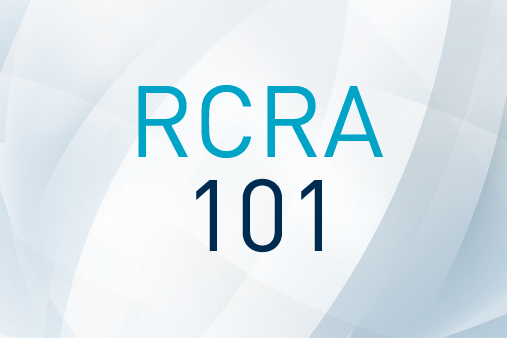Title 40 of the Code of Federal Regulations (CFR) is where you will find the regulations surrounding protection of the environment. Within this title, Chapter 1 Subchapter 1 part 261 lays out the regulations for identification and listing of hazardous waste. Definitions of solid waste and hazardous waste are outlined in Part 261. Be aware, “solid waste” is just terminology, a solid waste can be any state of matter.
From 40 CFR Chapter 1 Subchapter 1 Part 261, “A solid waste is any discarded material that is not excluded under § 261.4(a) or that is not excluded by a variance granted under §§ 260.30 and 260.31 or that is not excluded by a non-waste determination under §§ 260.30 and 260.34.” For the sake of simplicity, block out the exclusions and it reads “A solid waste is any discarded material”.
The exclusions are a whole different topic but just to get an idea of what some exclusions are, they include but are not limited to: domestic sewage, industrial wastewater discharges, irrigation return flows, excluded scrap metal being recycled, and used cathode ray tubes being recycled.
Part 261 then explains what is considered a “discarded material”. It states, “A discarded material is any material which is: (A) Abandoned, as explained in paragraph (b) of this section; or (B) Recycled, as explained in paragraph (c) of this section; or (C) Considered inherently waste-like, as explained in paragraph (d) of this section; or (D) A military munition identified as a solid waste in § 266.202.”
Paragraph (b) can be summarized as saying that a material being abandoned is being disposed of, burned or incinerated, or sham recycled.
Paragraph (c) outlines that recycled means either “Used in a manner constituting disposal” (meaning applied to or placed on the land, i.e., petroleum being used as a product in laying asphalt), “Burning for energy recovery” (i.e., used to produce a fuel), “Reclaimed” (processed to recover a usable product), or “Accumulated speculatively” (accumulating materials that are speculated to be recycled). Table 1 (see below) displays whether the recycling situation leads to a material being a solid waste or not.
Table 1
| Use constituting disposal (§ 261.2(c)(1)) | Energy recovery/fuel (§ 261.2(c)(2)) | Reclamation (§ 261.2(c)(3)), except as provided in §§ 261.4(a)(17), 261.4(a)(23), 261.4(a)(24) or 261.4(a)(27) | Speculative accumulation (§ 261.2(c)(4)) | |
| 1 | 2 | 3 | 4 | |
| Spent Materials | (*) | (*) | (*) | (*) |
| Sludges (listed in 40 CFR Part 261.31 or 261.32) | (*) | (*) | (*) | (*) |
| Sludges exhibiting a characteristic of hazardous waste | (*) | (*) | – | (*) |
| By-products (listed in 40 CFR 261.31 or 261.32) | (*) | (*) | (*) | (*) |
| By-products exhibiting a characteristic of hazardous waste | (*) | (*) | – | (*) |
| Commercial chemical products listed in 40 CFR 261.33 | (*) | (*) | – | – |
| Scrap metal that is not excluded under 40 CFR 261.4(a)(13) | (*) | (*) | (*) | (*) |
What may surprise you is that even if a material is being recycled, there are instances when it can still be considered a solid waste. The instances where it is not considered a solid waste will be discussed in the article “RCRA Exclusions”.
Paragraph d on Inherently waste-like materials explains different cases where materials are solid wastes when recycled in any matter. These cases are specific to certain hazardous waste codes (F020, F021, F022, F023, F026, and F028) which are associated with wastes from the production of chlorinated phenols.
Military munitions only apply to the Department of Defense and manufacturers associated and are defined in 40CFR266.202. A solid waste can then be a hazardous waste if a waste code can be applied. There are characteristic waste codes (D codes), and listed waste codes (4 lists – F, K, P, and U). These will be further explored in the articles “Waste Characterization” and “Application of Waste Codes & Multiple Waste Codes”.

